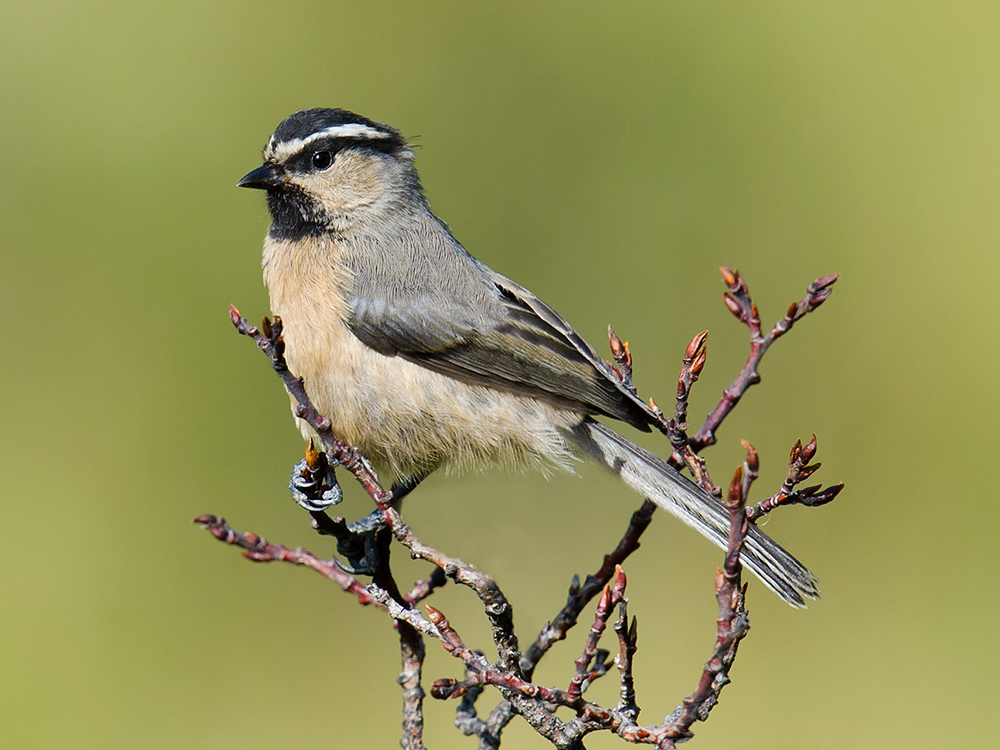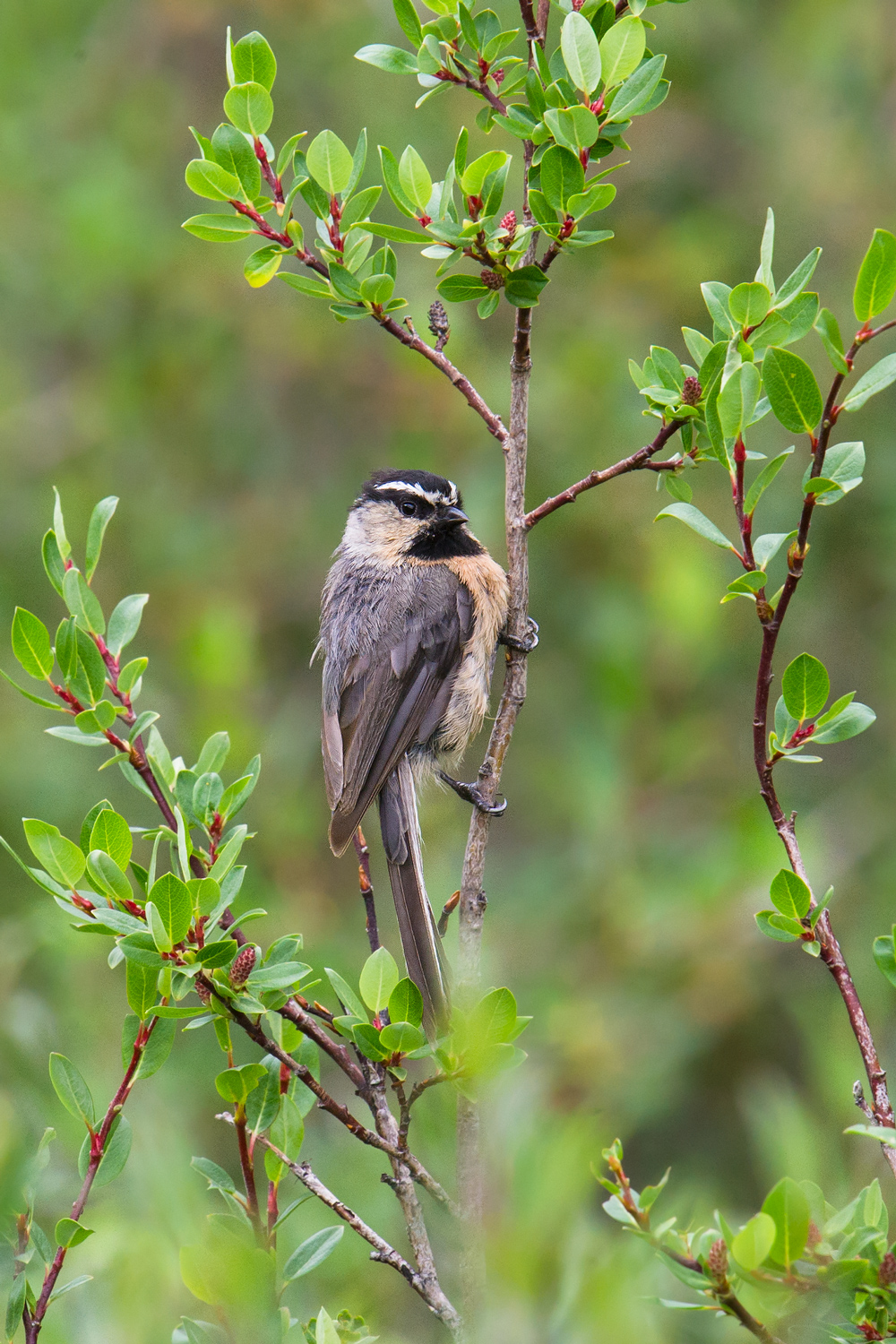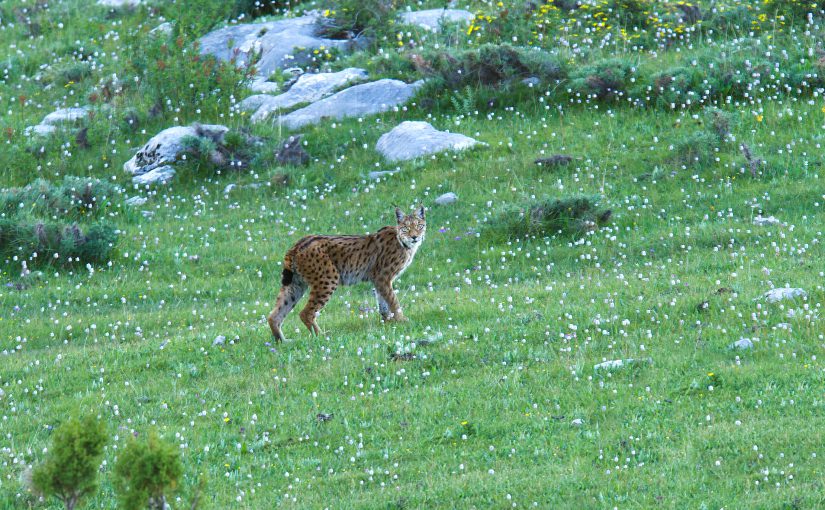by Craig Brelsford
Founder, shanghaibirding.com
This post covers the third and fourth weeks of our two-month birding expedition in Qinghai. The third week, 11–17 July, took place entirely within Yushu Prefecture and featured the arrival of Beijing-based Swedish birder Jan-Erik Nilsén. The highlight of this segment, and indeed of the entire expedition, occurred in Week 3, when we found Tibetan Lynx (above). We noted 93 bird species, discovered new birding sites, immersed ourselves in Tibetan Buddhist culture, and saw evidence of attacks by Brown Bear.
X308, A LITTLE-KNOWN, BIRDY ROAD
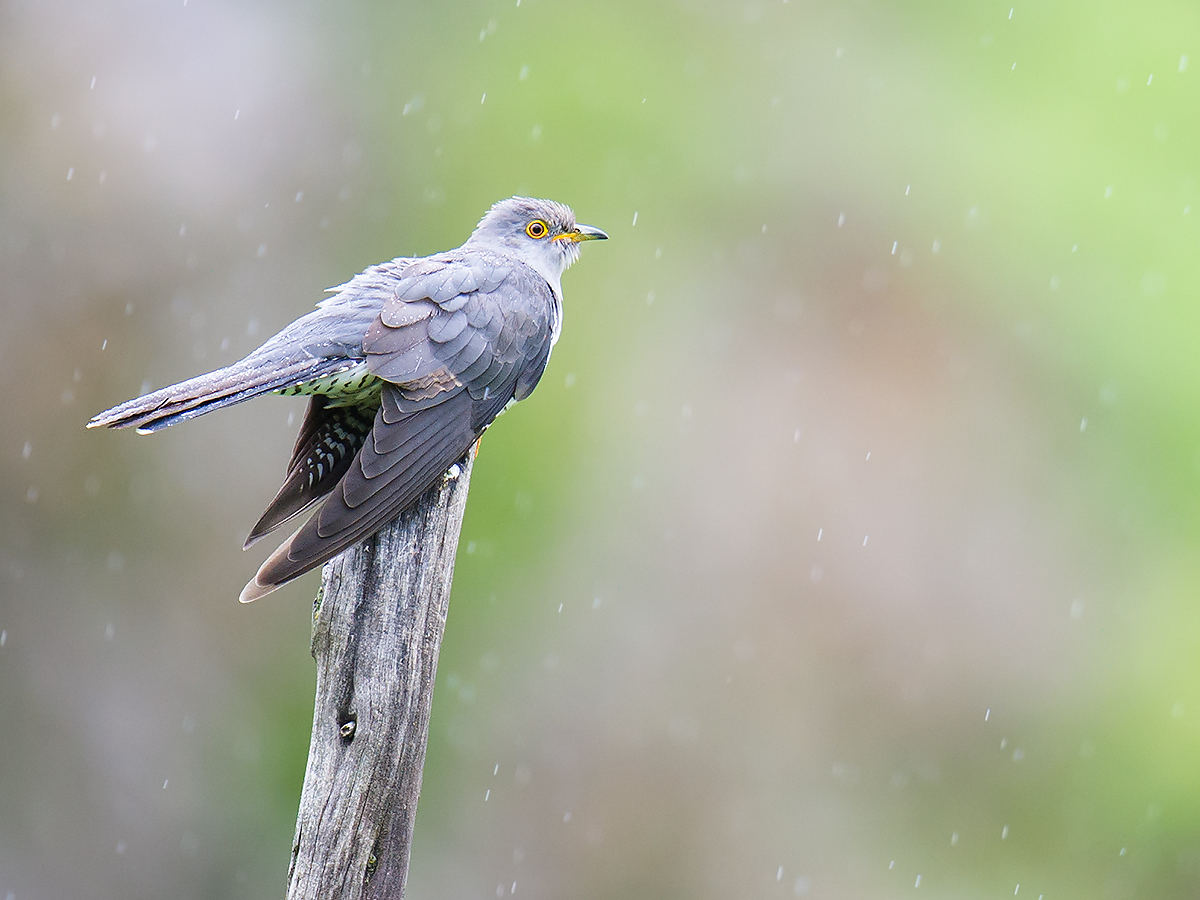
Jan-Erik, Elaine Du, and I spent 12–13 July exploring a scenic and birdy 85-km (53-mi.) stretch of County Road 308 (X308). The route starts at the junction on the G214 15 km south of Yushu-Jiegu; the junction is at 32.869631, 97.070772. The route ends at Xiao Sumang Xiang near the Qinghai-Tibet border. The midpoint is Dagela Pass, elev. 4752 m (15,590 ft.), which divides the Yangtze and Mekong watersheds. On either side of the pass is scrub more pristine than any I have seen in Qinghai. In many places, the scrub covers entire slopes, from the tree line hundreds of meters above to the X308 on the valley floor.
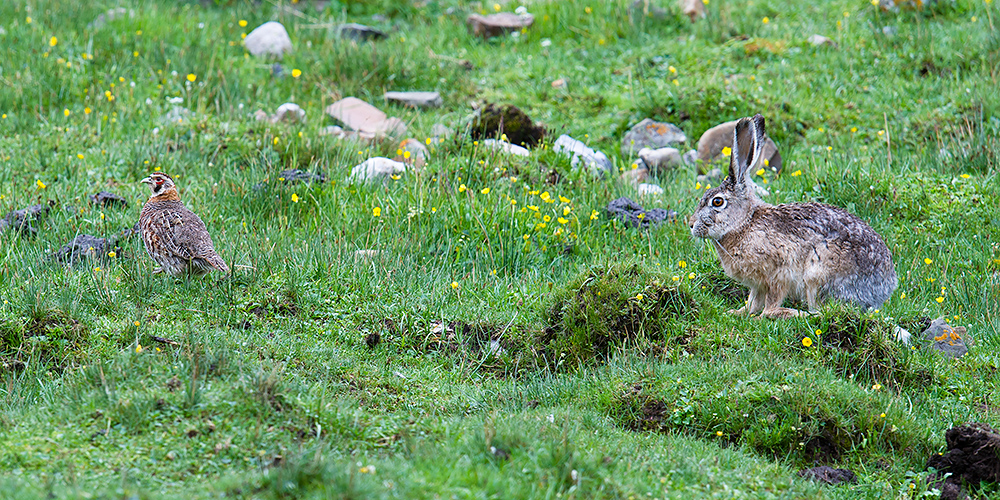
Our X308 route is a good place to find Tibetan Partridge. We noted 28 without really searching. In one dreamlike scene, a pair of Tibetan Partridge were feeding at dusk with a Woolly Hare.
Among our other X308 highlights were Alpine Accentor at Dagela Pass and, on the slopes below, Grandala and Güldenstädt’s Redstart. We noted Red-fronted Rosefinch, the highest-breeding (to elev. 5700 m/18,700 ft.) bird in the Palearctic, and Streaked Rosefinch, another high-altitude breeder.
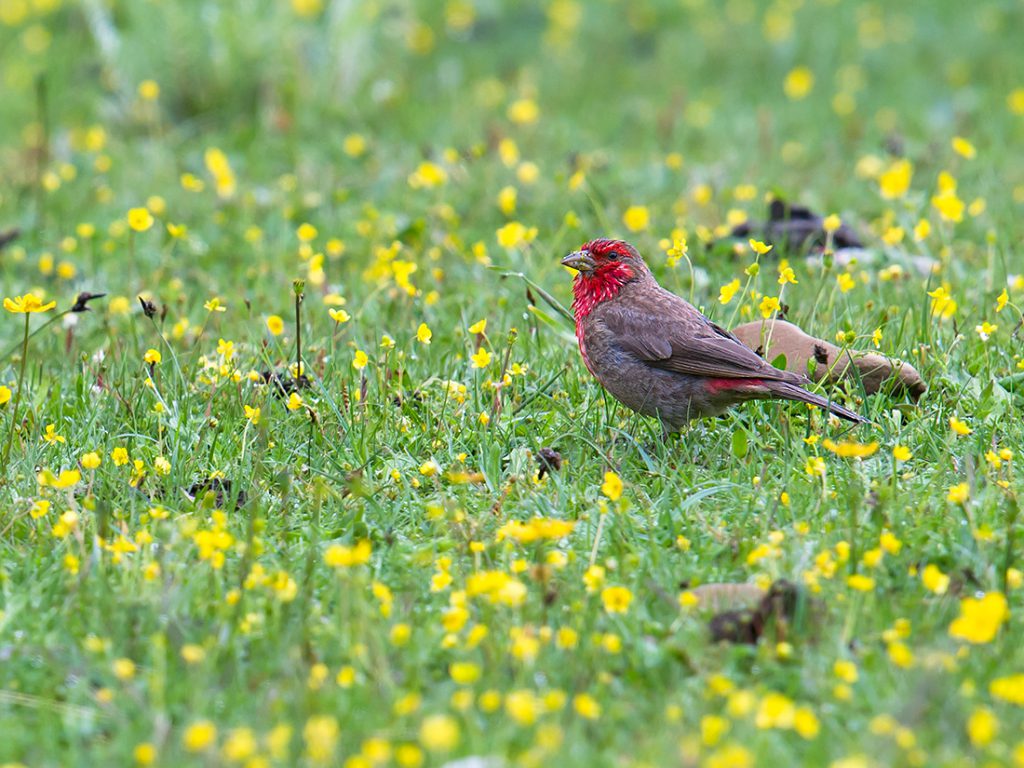
The scrub delivered close views of White-browed Tit and White-browed Tit-warbler as well as Common Cuckoo and Greenish Warbler. In the streams were Ibisbill, White-throated Dipper, and Brown Dipper. Bearded Vulture, Himalayan Vulture, and Golden Eagle soared above. Among the most conspicuous birds were Kessler’s Thrush (39), found mainly around the scrub, and on the grassy slopes Brandt’s Mountain Finch (50) and Tibetan Snowfinch (25). We noted a single Snow Pigeon.
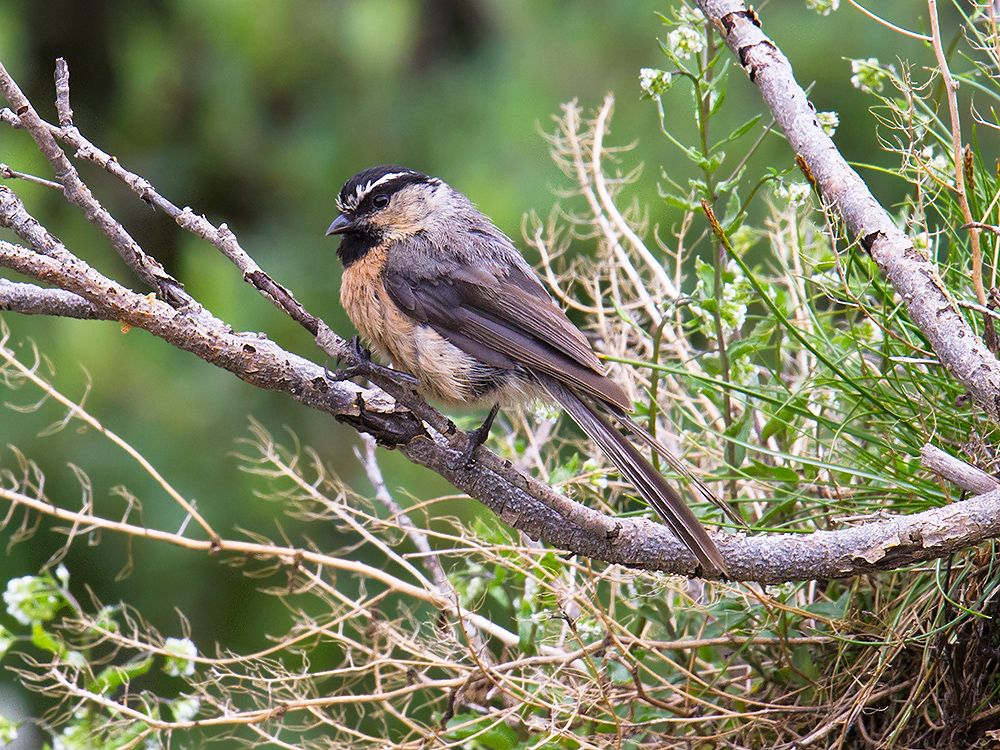
A group of eagle-eyed Tibetans gave us close views of White-lipped Deer. Two truckfuls of these hard-working men skidded to a stop near us, curious about the foreigners with the telescope on the side of the X308. None spoke Chinese. As one of the men was trying out my binoculars, another man was pointing to the scrub-covered slope and giving me the three symbol with his fingers. Finally I understood: 3 White-lipped Deer just visible in the scrub above. The buck looked formidable and the two does appeared healthy.
We returned to Yushu-Jiegu and there spent the night of 13–14 July.
DOGS, LYNX, AND BEARS, OH MY!
On 14 July we set off again, this time heading south on the G214 to Nangqian County and Kanda Mountain. We found Wallcreeper along the G214 as well as on a sheer limestone wall in the narrows at Kanda Gorge.
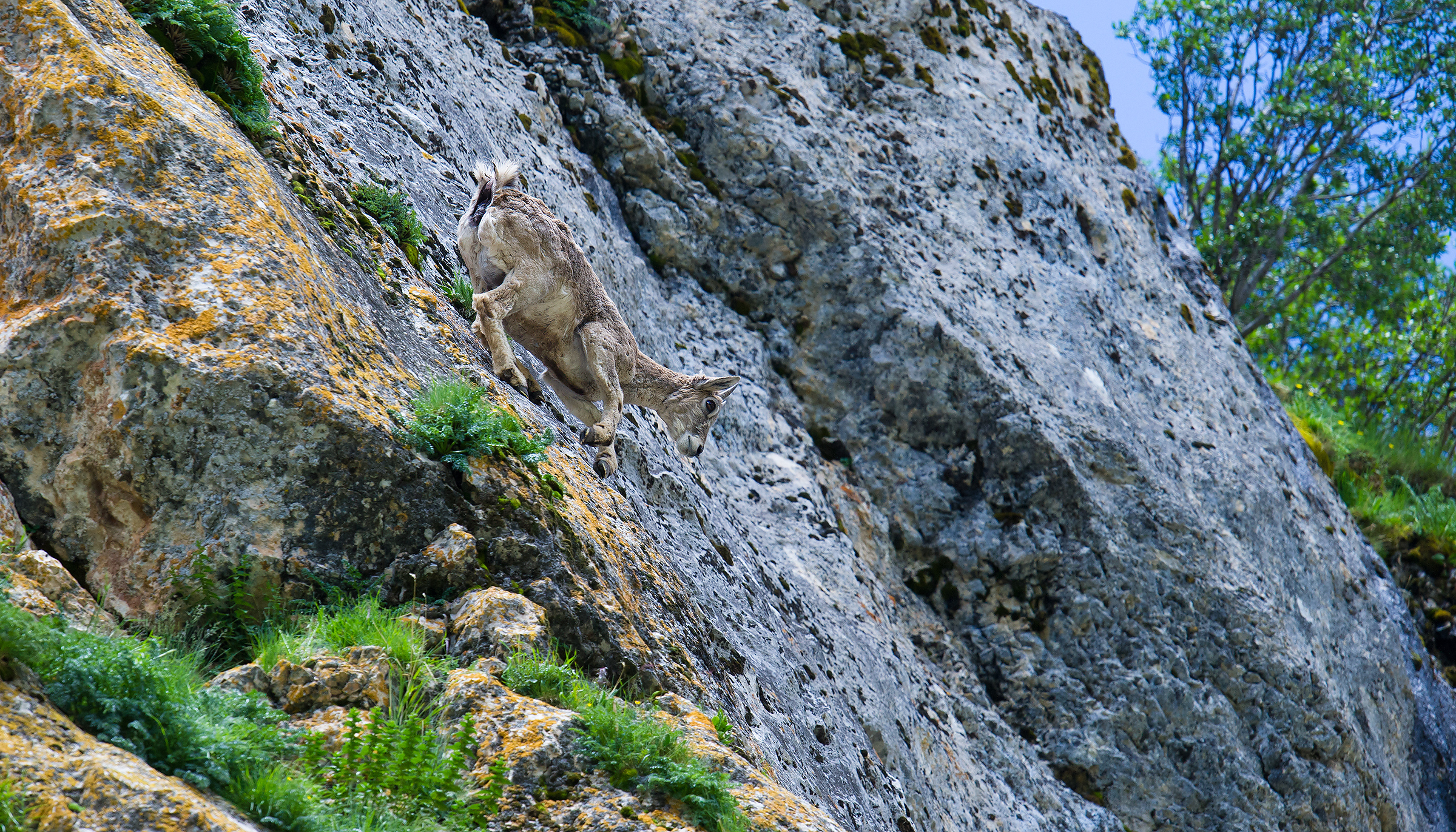
Kanda Nunnery (32.291641, 96.512173) is nestled in a valley above the Gorge and is an easy place to pick up Tibetan Partridge and Tibetan Babax. We saw a partridge but were stymied in our quest to view Tibetan Babax by a pack of watchdogs.
As I was walking toward the car, Elaine, who had been resting in the car, suddenly emerged, startling the dogs, which had been lying near the car. Elaine climbed back into the car, and the dogs surrounded me, growling and baring their teeth. Nine days earlier, I had fed and befriended the very dogs that were now snarling at me. I first tried standing firm, but still they closed in. Then I kicked them, but when I went for one, the other four would nip at my heels. I finally had no choice but to jump onto the hood of our Mitsubishi Pajero. One of the nuns came out and chased the dogs away.
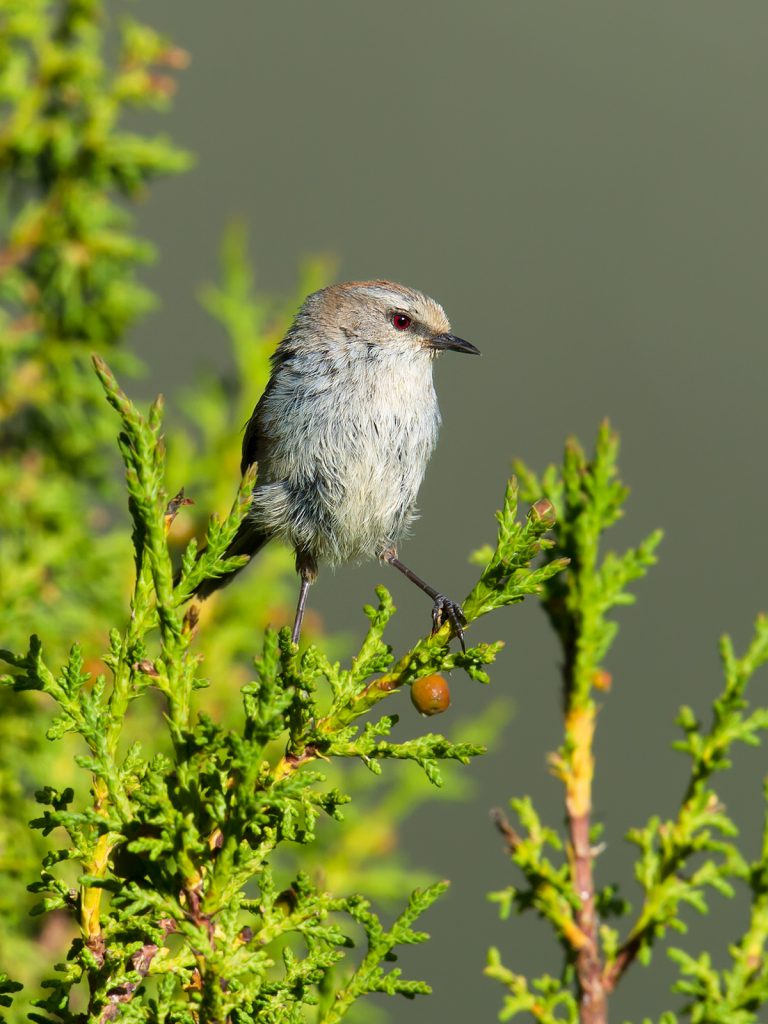
All the unpleasantness with the dogs melted away the moment we saw the lynx. It was around sunset. With me at the wheel, my birding partners and I are driving up the Kanda Mountain road. I look left and see the lynx. It is motionless, looking at us. What luck! What a stunning sight!
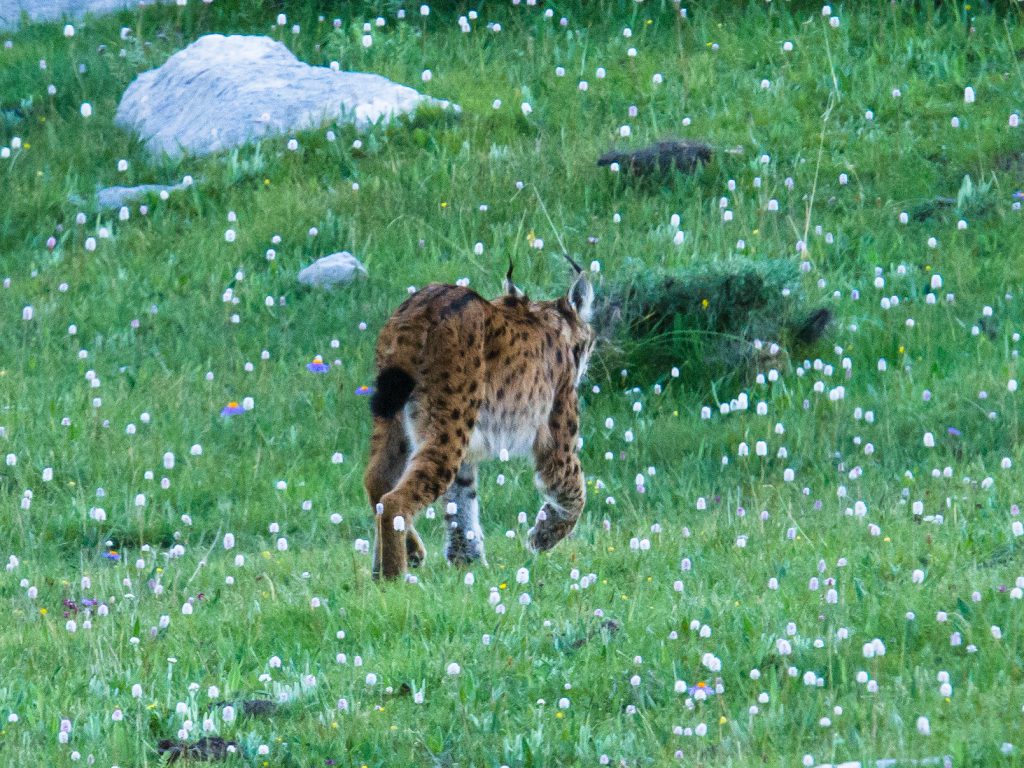
“Wild cat!” I cry to my partners, hitting the brakes and reaching for my camera. The lynx posed only a moment before trotting away.
I’d waited nearly half a century to glimpse a lynx. My partners also had never seen a lynx. This is the Central Asian subspecies of Eurasian Lynx, also known as Himalayan Lynx and Turkestan Lynx. We found the lynx at elev. 4550 m (14,920 ft.).
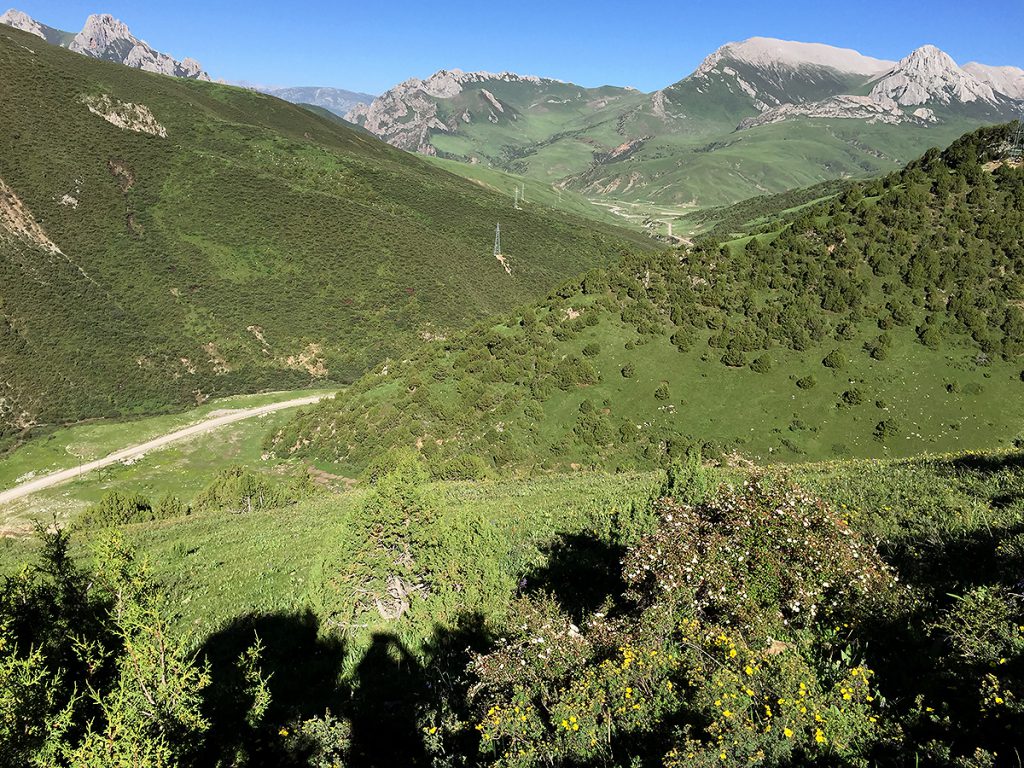
Lynx roam throughout the Northern Hemisphere and are mainly associated with boreal forests. Alpine meadows at 4550 m (14,920 ft.) may not be classic lynx habitat, but our specimen was very much well-suited—a sleek, supple, healthy cat, probably feasting regularly on the Blue Sheep, Himalayan Marmot, Plateau Pika, Woolly Hare, and gamebirds that are abundant at Kanda.
Just before finding the lynx, we observed a group of White-browed Tit-warbler at 4400 m (14,440 ft.). At Kanda Pass, elev. 4680 m (15,350 ft.), we found the local Tibetan Bunting within minutes of our arrival. Here is the male singing:
Tibetan Bunting Emberiza koslowi, Kanda Pass (32.314561, 96.624807), Qinghai, elev. 4680 m (15,350 ft.), 14 July, by Craig Brelsford (0:33; 2.9 MB)
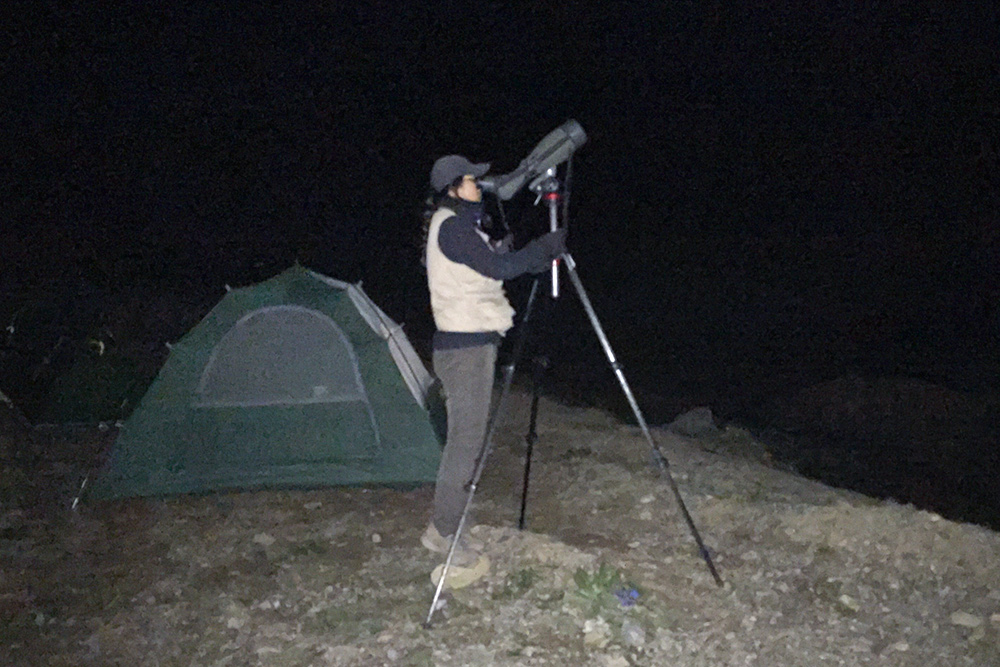
Star-gazing at Kanda Pass was even better than it was 3 July near Maduo-Machali, probably because we were higher by 400 m (1,310 ft.). I could not keep my eyes off Saturn, its ring clearly visible. The Galilean moons of Jupiter were easy to pick out, and we saw the bands ringing the gas giant.
The next morning, 15 July, just below Kanda Pass (at 32.310031, 96.607089), Jan-Erik’s sensitive ear once again proved its worth. He correctly assumed that the rosefinch in front of us was not the more commonly noted Pink-rumped Rosefinch but Himalayan Beautiful Rosefinch. I recorded the call of the individual shown below:
Himalayan Beautiful Rosefinch Carpodacus pulcherrimus, point (32.310031, 96.607089) below Kanda Pass, Qinghai, elev. 4350 m (14,270 ft.), 15 July, by Craig Brelsford (0:49; 2.7 MB)
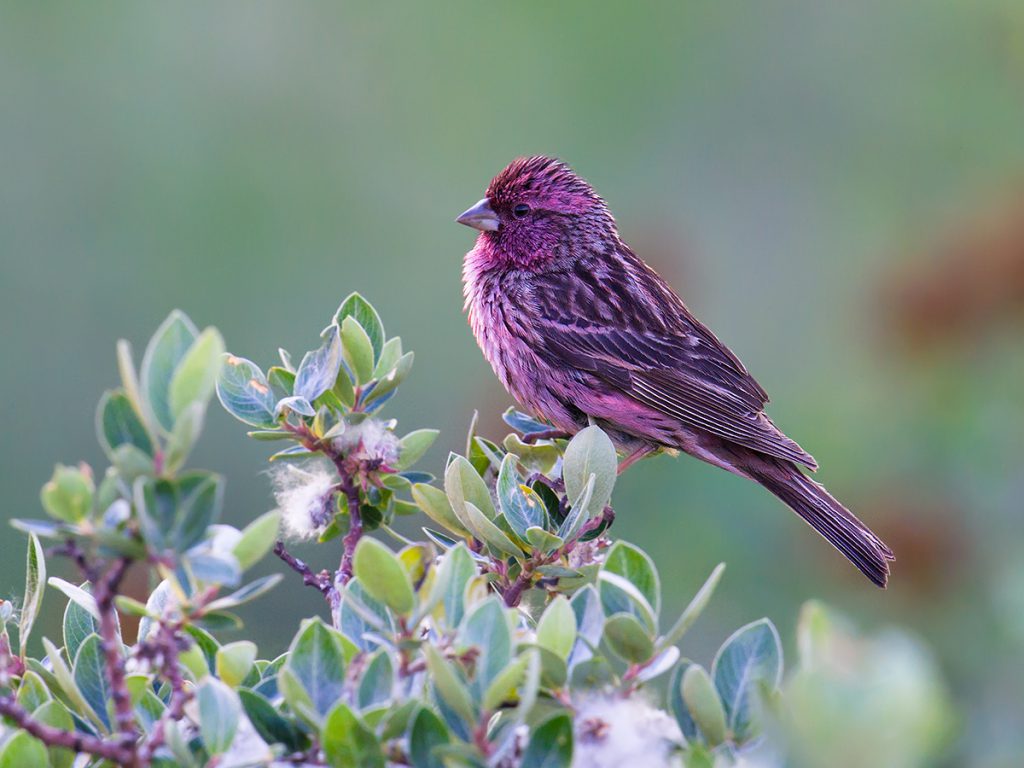
We drove over Kanda Pass to the eastern side of the mountain, passing through good scrub habitat and getting a view of singing Chinese Rubythroat. We followed the X830 to Maozhuang (32.266550, 96.824579) and continued south through the scenic gorge of the Ziqu River, a tributary of the Zaqu River (upper Mekong River). Finally we arrived at the forest station, Jiangxi Forest Management Area (32.076777, 97.009417), just a valley away from Tibet.

At the gate, the friendly Tibetan guard asked us what we wanted to seek there. “Birds,” Elaine said. “Birds? You won’t find many,” he said, and let us in.
In Jiangxi Village we camped on the grounds of an institution called the “City of Yushu Jiangxi Huimu Vocational Training School” (32.076395, 97.063995). There, students, under the tutelage of two monks, study Buddhist-style painting. Their works are beautiful, the students are polite, and the kangbo (monks) are wise and kind. The school is an outpost of civilization in the wilderness.
We were befriended by Genqiu (根秋), a student from Kangding, Sichuan. We taught him English; he revealed to us his dream of going to the United States to see his cousin.

Genqiu took us to the studio, where 20 students were painting a wall-sized canvas that will take months to complete while one of the kangbo chanted Buddhist prayers. Later, Genqiu and his master showed us sacred paintings worth thousands of yuan. I felt I had been plugged into a Matrix, a beautiful, higher world of art, order, and peace.
On 16 July the school was visited by a huofo (活佛, “living Buddha”). The huofo smiled at me and said, “America.” Genqiu said, “I have been at this school for three years and had never seen a huofo. You have been here one day and already seen a huofo.”
We drove through the gorge. The school is at elev. 3680 m (12,070 ft.); we rose to 4000 m (13,120 ft.). As we ascended, farms and settlements grew farther apart, and the locals started telling us of attacks by Brown Bear. At first we thought the folks were telling tall tales, but we kept hearing the same story—that a local man had been mauled and had to be taken to Xining for treatment. On 17 July, as we were driving back to Yushu, we met a man who showed us the damage two Brown Bear caused when they broke into his farm.
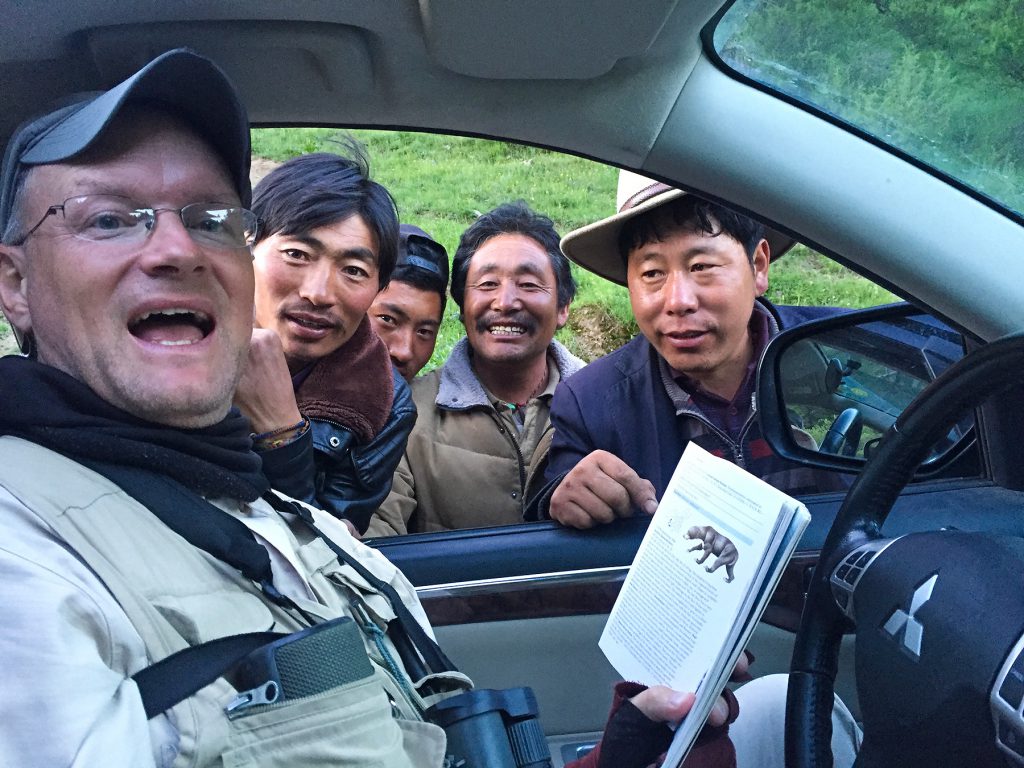
The reports of bear aroused our curiosity, and we scanned the slopes and ridges looking for one. We found none, but our search bore fruit with good views of Sichuan Deer Cervus canadensis macneilli and at dusk a distant view of White Eared Pheasant.
The steep valleys around Jiangxi Forest Management Area and the Ziqu River gave us a rare Qinghai record of Japanese Tit as well as Black Kite, Black Woodpecker, Grey-headed Woodpecker, Sichuan Tit, Long-tailed Minivet, Giant Laughingthrush, Tibetan Babax, and Dark-sided Flycatcher.
On the grounds of the school, birds roamed freely and fearlessly. Large-billed Crow cawed throughout the day, Elliot’s Laughingthrush were ubiquitous, Kessler’s Thrush used the lawns, and Slaty-backed Flycatcher called from the copses. There were three species of pigeon: Snow Pigeon, Hill Pigeon, and Oriental Turtle Dove. The trill of Pink-rumped Rosefinch was commonly heard, and Hodgson’s Redstart and White-throated Redstart were the two main representatives of Phoenicurus. Salim Ali’s Swift and Eurasian Crag Martin were in the area, and we noted Red-rumped Swallow.
Jan-Erik and I paid special attention to leaf warblers. We found Yellow-streaked Warbler, Buff-barred Warbler, Sichuan Leaf Warbler, and Greenish Warbler and have an unconfirmed record of Claudia’s Leaf Warbler. I sound-recorded Sichuan Leaf Warbler:
Sichuan Leaf Warbler Phylloscopus forresti, trill, Jiangxi Forest Management Area, Qinghai, China, 16 July, by Craig Brelsford (0:25; 1.8 MB)
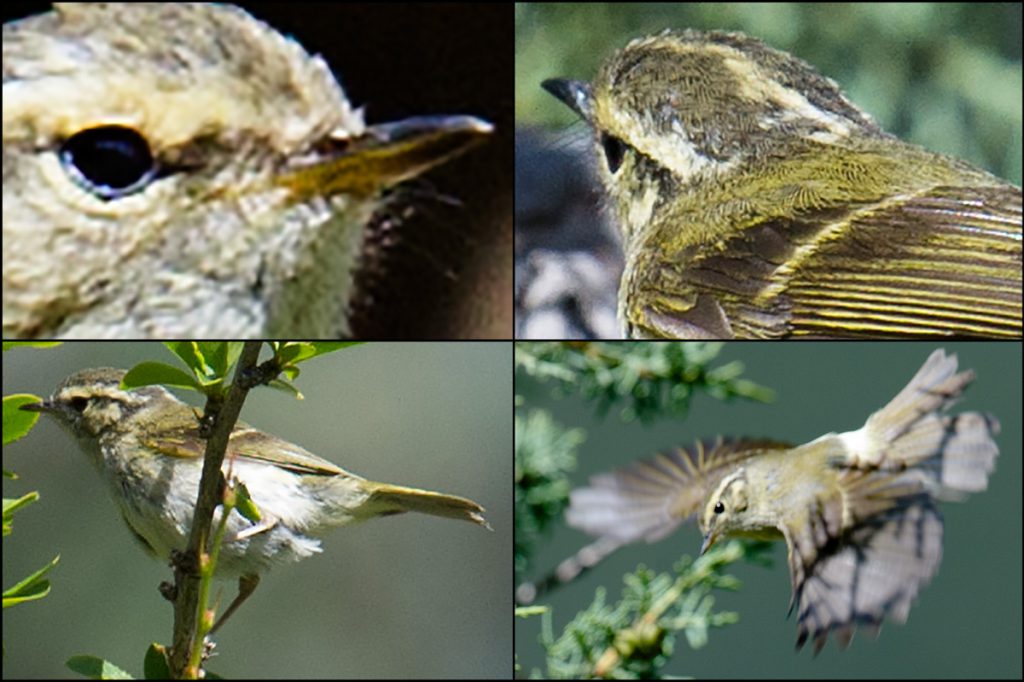
After staying two nights at the school, on 17 July we returned to Yushu-Jiegu via Xiao Sumang Xiang and the X308. En route we found a pair of White-winged Grosbeak. The scrub on either side of Dagela Pass held Chinese Rubythroat, Blue-fronted Redstart, Robin Accentor, Brown Accentor, and Streaked Rosefinch. Tiny pools held Ruddy Shelduck, all the White Wagtail we saw were of the ninja-masked ssp. alboides, and breeding-yellow Citrine Wagtail looked like drops of sunshine on the green pastures.
We spent the night of 17-18 July at Yùshù Kōnggǎng Jiǔdiàn (玉树空港酒店). This hotel is a good choice for birders needing a rest after days birding at high altitude. The restaurant is good and the shower in your room is separated from the rest of the bathroom. We paid 320 yuan per night.
WEEK 4
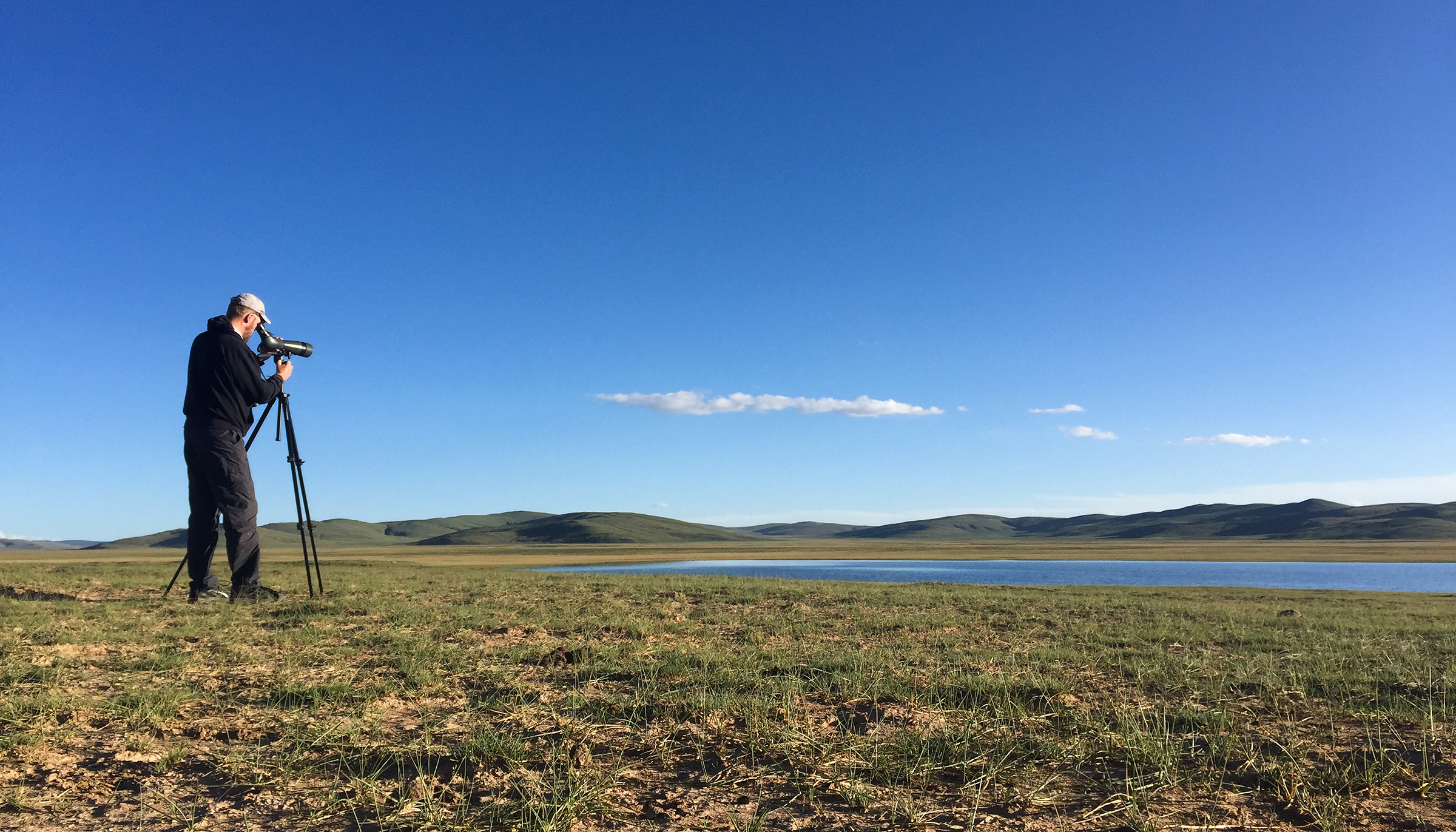
Jan-Erik’s second week with us was Elaine’s and my fourth overall. We ranged from Yushu-Jiegu (33.002242, 96.978488) north through Maduo County and Ela Pass (35.497608, 99.511449) and into the desert around Dulan before a final night in Chaka (36.791576, 99.078878) and a long ride to Xining Caojiabao Airport (36.527923, 102.040889). We noted 69 species. Highlights:
Greylag Goose Anser anser
2 in pond west of Chaka (36.791576, 99.078878). First record for Qinghai 2016 trip.
Bar-headed Goose Anser indicus
952 in lakes in Maduo County (elev. 4250 m [13,940 ft.]) and at Lake Donggeicuona (35.290072, 98.537098) in Maduo County (elev. 4100 m [13,450 ft.]).
Grey Heron Ardea cinerea
1 at Lake Donggeicuona. My first record on Tibetan Plateau.
Great Egret Ardea alba
1 at Donggeicuona. My first on Tibetan Plateau. Unexpected in region (according to A Field Guide to the Birds of China).
Eastern Cattle Egret Bubulcus coromandus
1 surprising record along G214 in Maduo County at lofty 4250 m (13,940 ft.).
Steppe Eagle Aquila nipalensis
1 sub-ad. 24 July in semi-desert between Chaka (36.791576, 99.078878) and Heimahe (36.729239, 99.779524).
Himalayan Vulture Gyps himalayensis
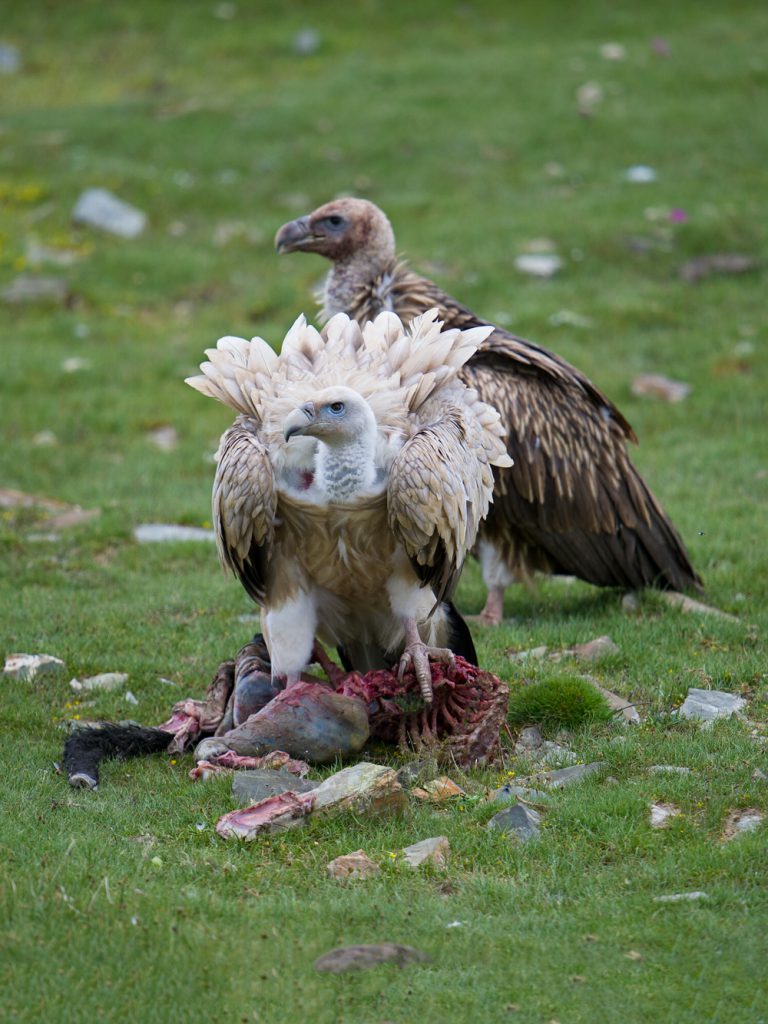
Amazing scene 20 July near Ela Pass (35.497608, 99.511449) in which juvenile waited patiently while adult ate its fill of lamb carcass.
Black-necked Crane Grus nigricollis
16 around Maduo County wetlands, at Donggeicuona, and at Chaka.
Black-winged Stilt Himantopus himantopus
4 in pond with Greylag Goose west of Chaka. My first on Tibetan Plateau.
Black-tailed Godwit Limosa limosa
59 around Chaka. Unexpected (according to A Field Guide to the Birds of China).
Little Owl Athene noctua
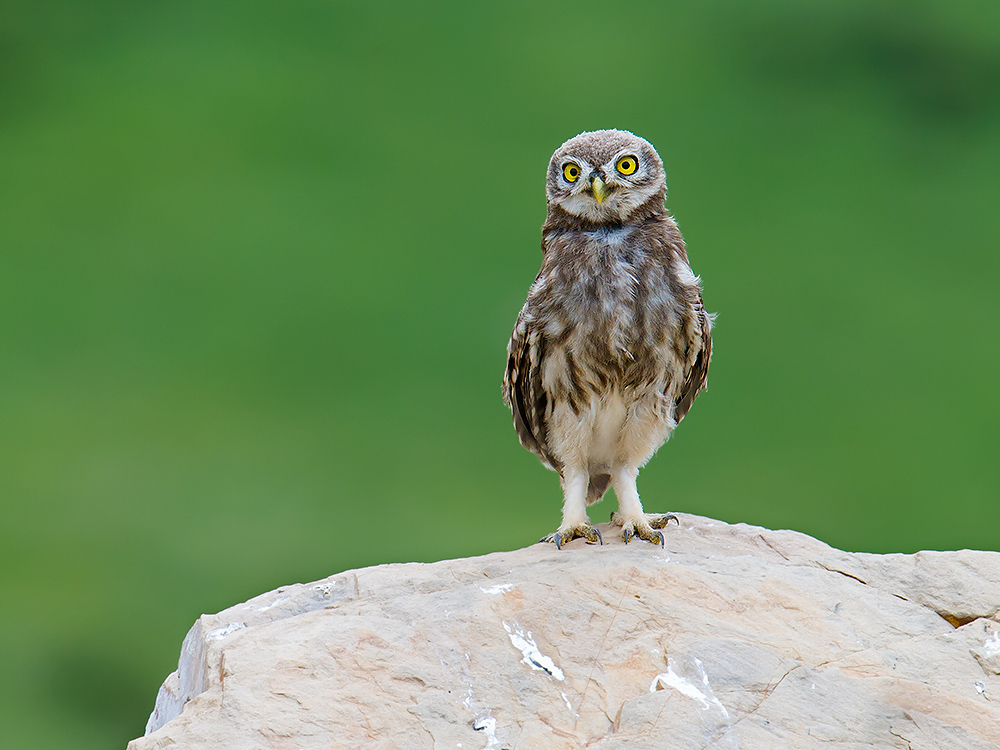
Owlets examined us near Yankou Shan (33.199406, 97.466606) in Yushu Prefecture.
Chinese Grey Shrike Lanius sphenocercus giganteus
4 in semi-desert W of Dulan.
Mongolian Lark Melanocorypha mongolica
4 in grassland between Chaka and Gonghe-Qiabuqia (36.275266, 100.624701).
Barn Swallow Hirundo rustica
1 (first record of trip) across from hotel in Chaka (36.791576, 99.078878).
Desert Whitethroat Curruca minula
1 singing individual and 1 dead individual in semi-desert west of Dulan.
Tibetan Rosefinch Carpodacus roborowskii
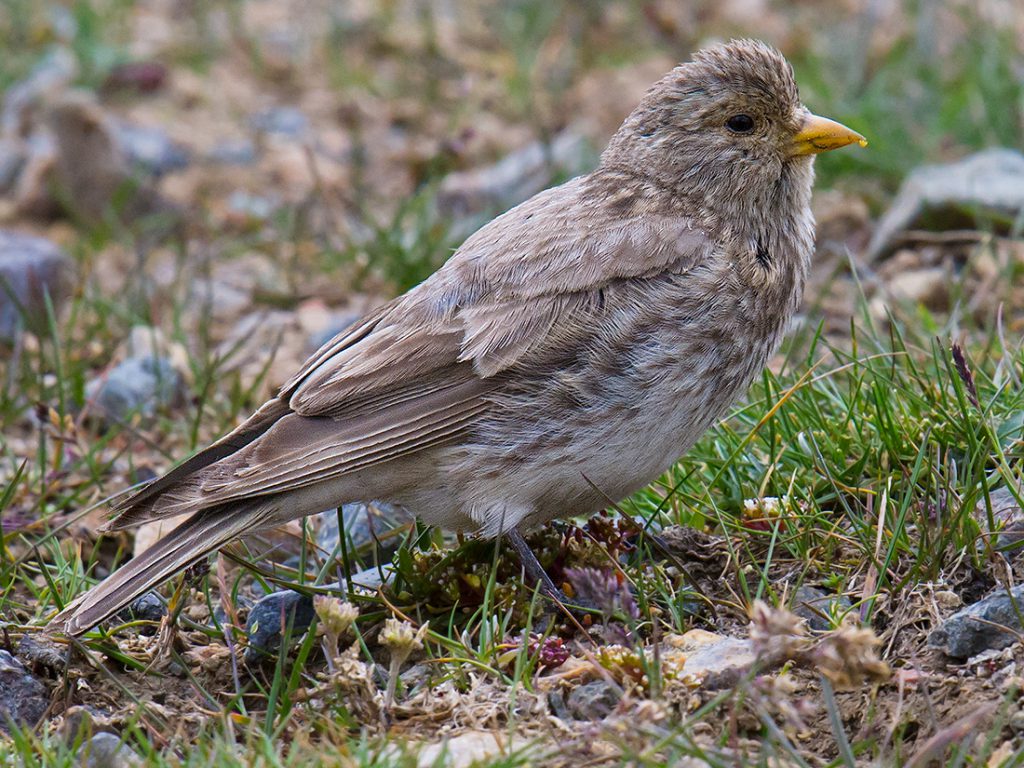
1 female at Ela Pass (35.497608, 99.511449), elev. 4499 m (14,760 ft.), on G214, Hainan Prefecture.
Streaked Rosefinch Carpodacus rubicilloides
2 (pair) aggressively defending territory in semi-desert west of Dulan.
Great Rosefinch Carpodacus rubicilla
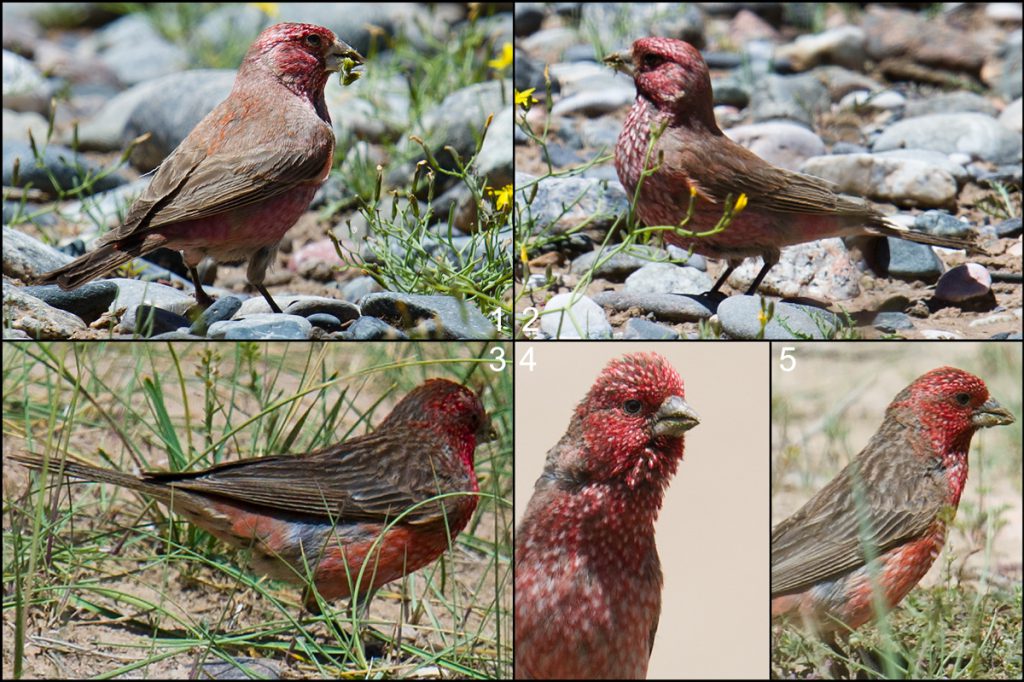
2 males found near Streaked Rosefinch; no defense of territory, no streaking on back, larger white spots on breast, browner wings.
Tibetan Snowfinch Montifringilla henrici
2 at Ela Pass.
Pine Bunting Emberiza leucocephalos fronto
8 singing males at Przevalski’s Site (36.457249, 98.502578) in Dulan Mountains west of Chaka.
MAMMALS
Mongolian Five-toed Jerboa Allactaga sibirica
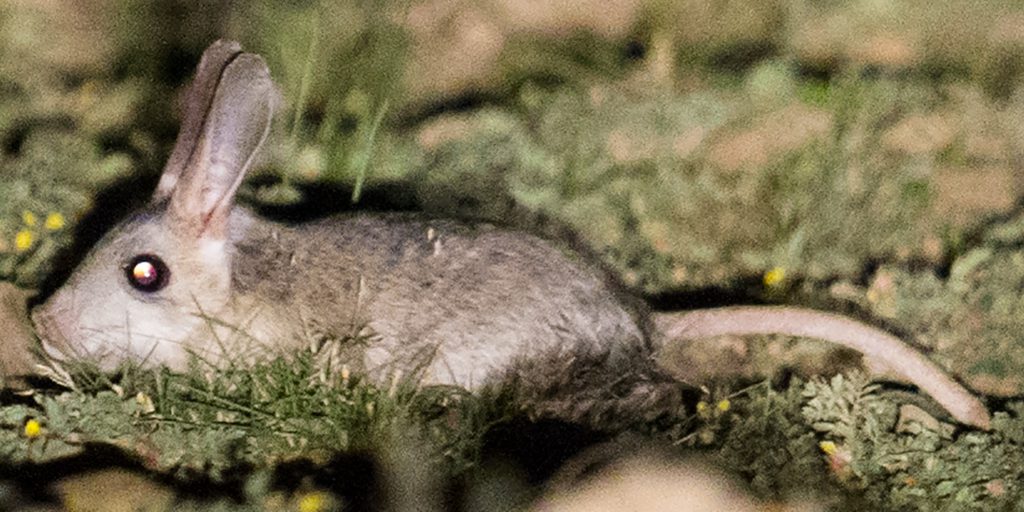
6 noted after dark 19 July at elev. 4250 m (13,940 ft.) on steppe west of Maduo-Machali (34.911354, 98.211208). Although we found jerboas along paved roads, we had more success along dirt roads, where traffic was less. A particularly good dirt road is 13.8 km (8.6 mi.) from Maduo-Machali on the X731. It can be accessed from the X731 at 34.976612, 98.100317. The dirt road is on the right-hand side of the X731 for drivers coming from Maduo-Machali.
Bactrian Camel Camelus bactrianus
ca. 1000 in rangeland west of Chaka. Presence of this huge herd on 23 July probably was the factor dooming Jan-Erik’s chances of another look at Henderson’s Ground Jay.
Tibetan Wild Ass Equus kiang
166 on 21 July around Gouhua, a site near the border of Guoluo and Haixi prefectures and first covered by Jan-Erik, Brian Ivon Jones, and me in July 2014. This site remains the single-richest spot for Tibetan Wild Ass that I have seen.
Red Fox Vulpes vulpes
3 (1 on 22 July at Przevalski’s Site, 2 on 18 July near Maduo-Machali).
Tibetan Fox Vulpes ferrilata
7 (2 near Maduo 19 July, 5 [2 ads., 3 juvs.] 18 July near Maduo-Machali).
PHOTOS
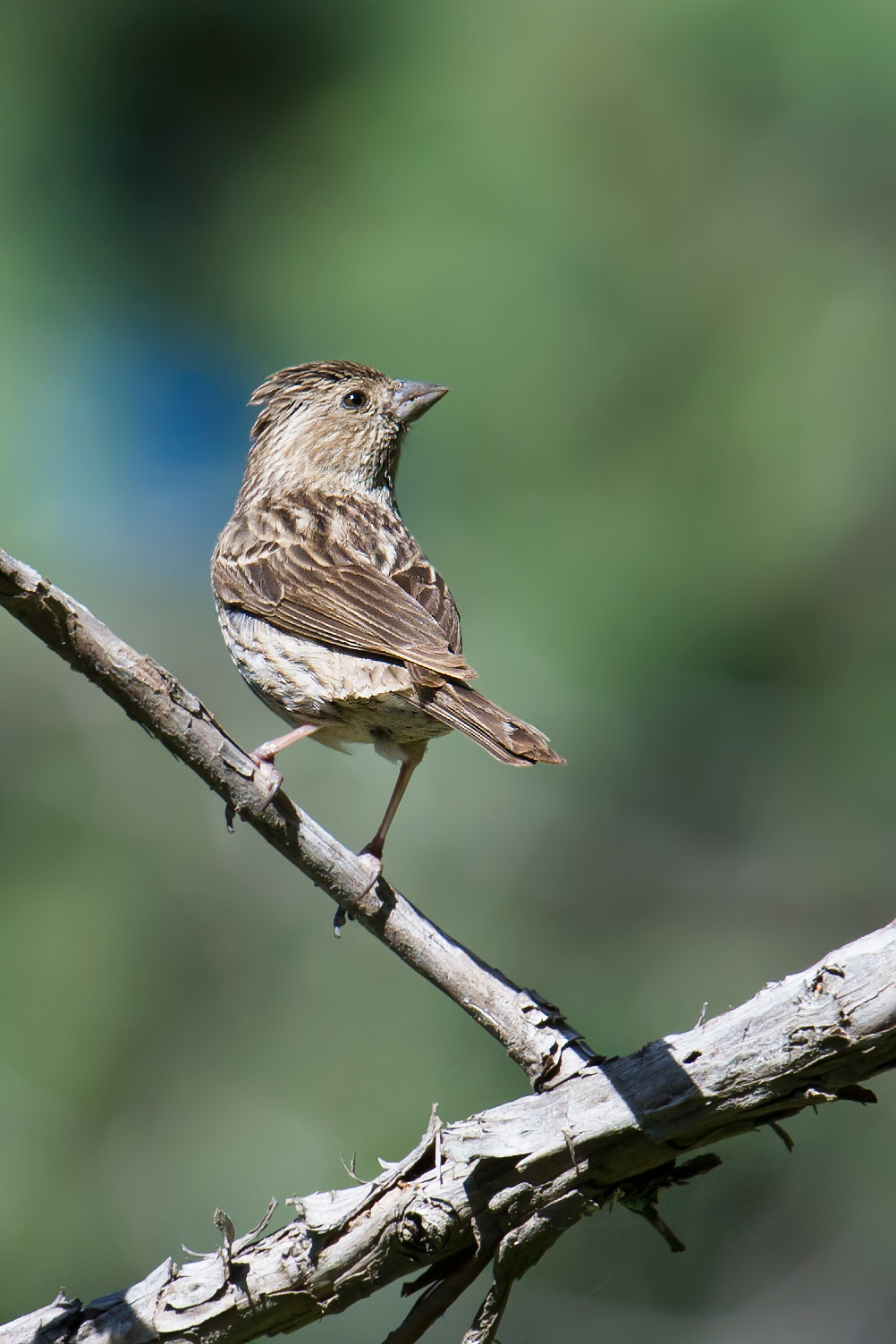
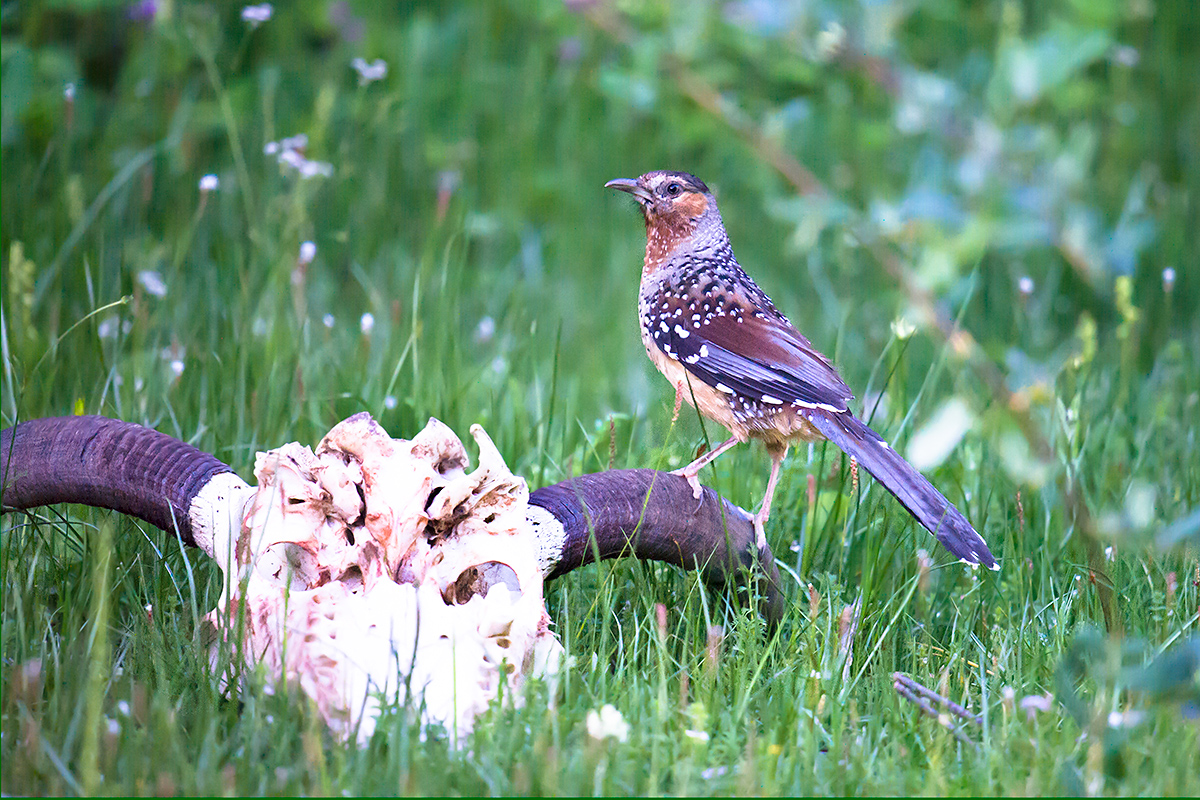
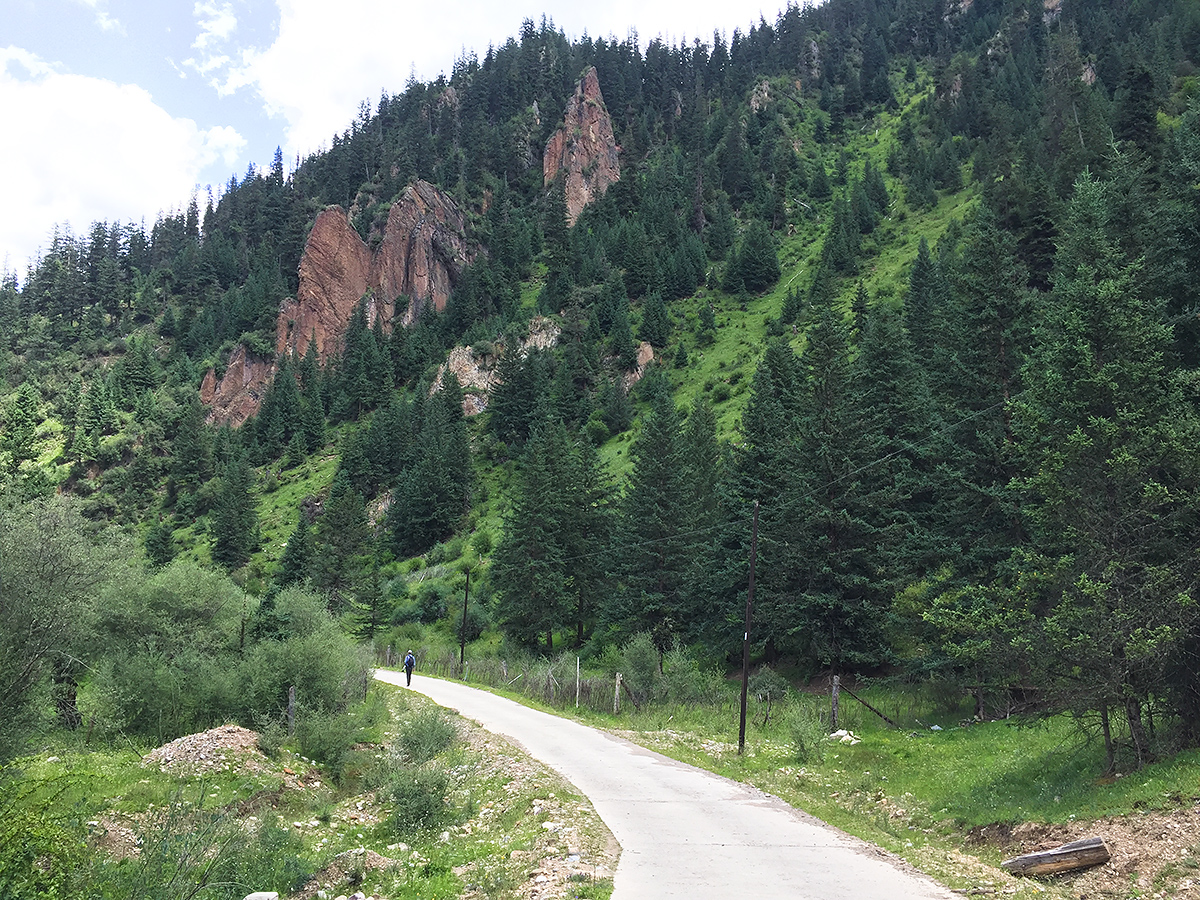

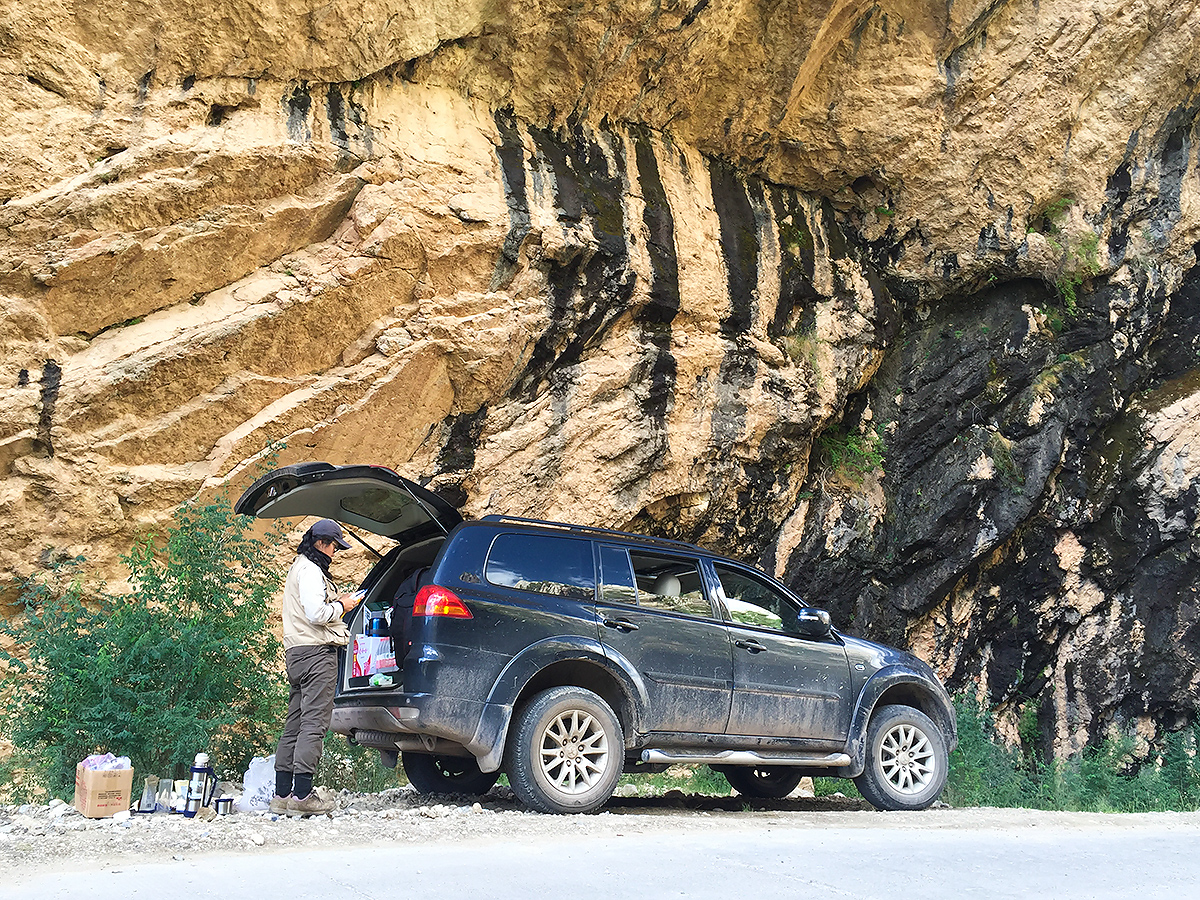

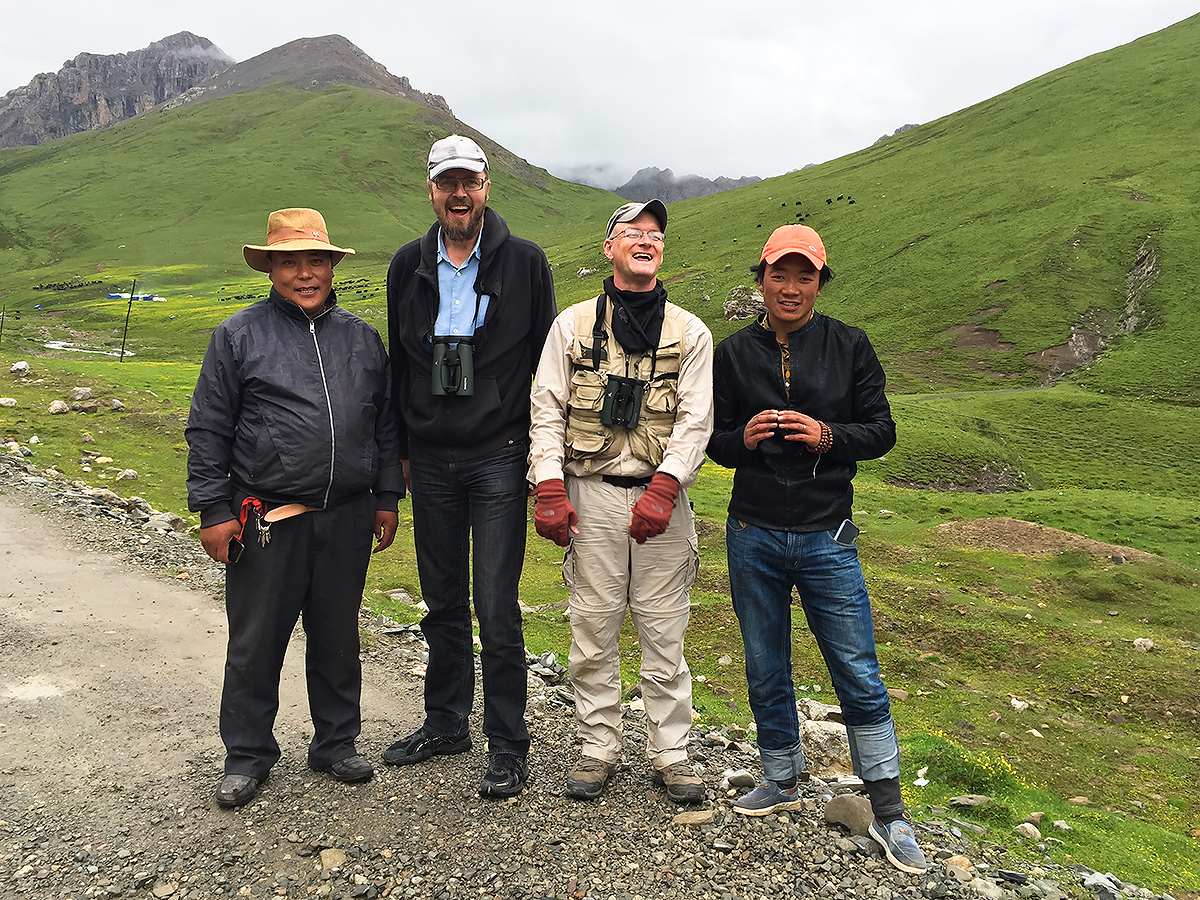

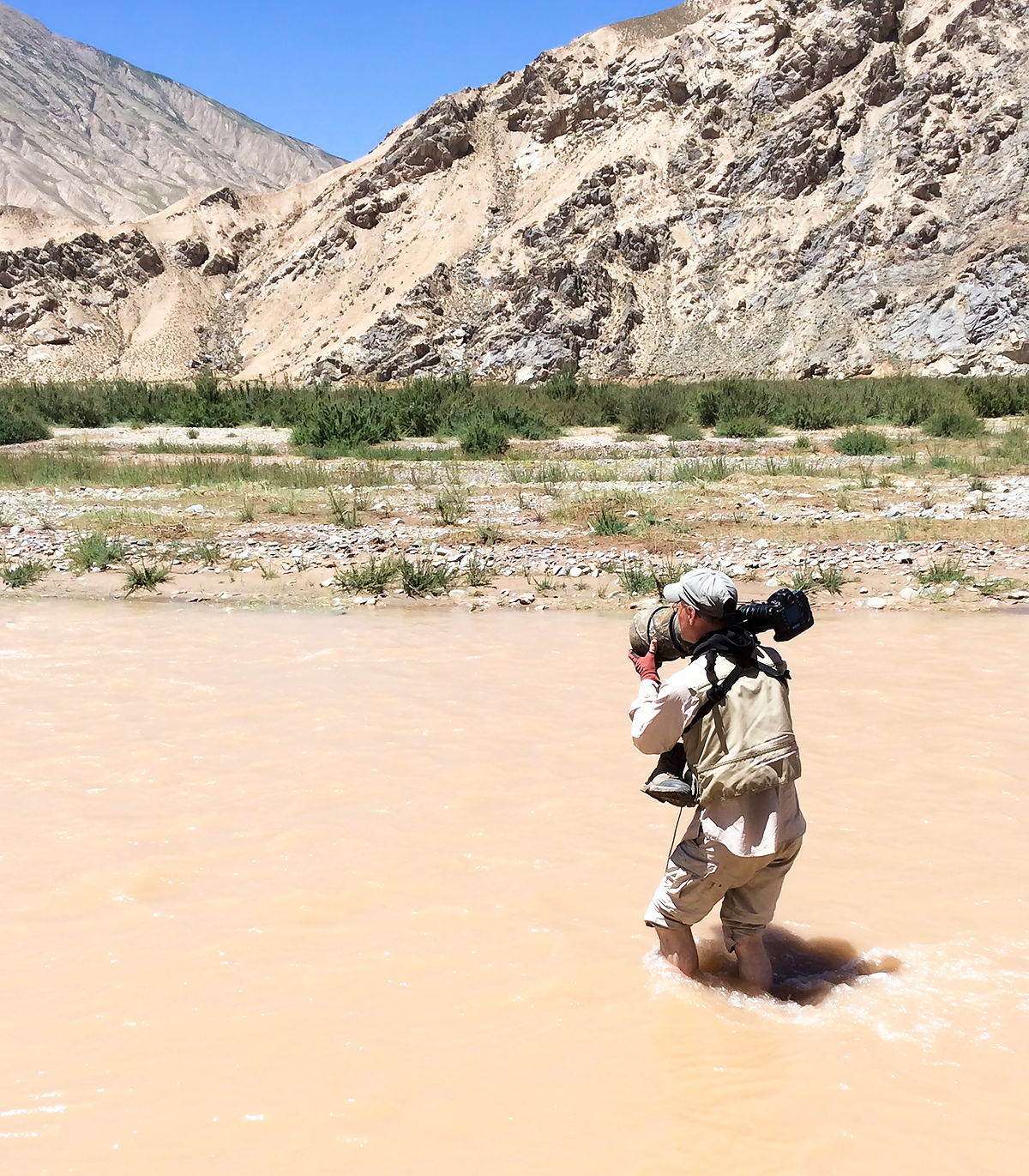
INDEX
shanghaibirding.com offers unparalleled coverage of birding in Qinghai. Below is an index to our posts on Qinghai. Reach us at info@shanghaibirding.com.

Summer-long Birding Expedition to Qinghai (Introduction): We birded Qinghai from June to August, spending the entire summer in the province. We noted classic Tibetan Plateau birds White Eared Pheasant, Black-necked Crane, White-browed Tit, and Przevalski’s Redstart. We explored little-birded northern Qinghai, discovering new locations for Przevalski’s Partridge, Tibetan Sandgrouse, and Gansu Leaf Warbler.
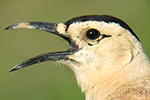
Birding Eastern Qinghai, from the Border with Gansu to the Border with Tibet: We spent the first two weeks of the expedition covering eastern Qinghai, from the Gansu border in northeast Qinghai to Ga’er Monastery on the border with Tibet. We had Henderson’s Ground Jay west of Chaka, Ibisbill on tributaries of the Mekong River, White-browed Tit in scrub along the G109, and Güldenstädt’s Redstart breeding near Qinghai Lake.
Birding Qinghai’s Eastern Yushu Prefecture (you are here)
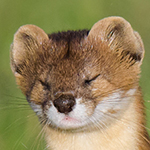
Birding the Qilian Mountains of Northern Qinghai: Our most important discovery was the poplar forests along the Heihe and Babao rivers, where we encountered woodland species Gansu Leaf Warbler and Chinese Thrush. Conifer forests yielded Black Woodpecker, and the scrub and pastureland gave us Eurasian Eagle-Owl, Siberian Roe Deer, and Mountain Weasel.
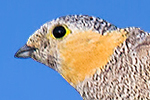
Forbidding (and Forbidden) Hala Lake: Defying a ban on foreigners, we birded the wild, remote inland sea in north-central Qinghai, elev. 4077 m (13,376 ft.). The lake yielded several interesting Qinghai records, among them Little Stint, Curlew Sandpiper, and Eurasian Whimbrel. Near shore, in perfect semi-desert habitat, we discovered flocks of Tibetan Sandgrouse.
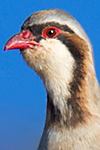
Birding the Remote Backcountry of Wulan County, Qinghai: Amid stunning scenery, we found Tibetan Wolf, discovered a new location for Przevalski’s Partridge, and around Lake Xiligou had Qinghai favorites Black-necked Crane and Tibetan Lark. The lake held a noisy super-flock of 4,600 Ruddy Shelduck, and Mongolian Goitered Gazelle were in the hills behind. Near Chaka we had Mute Swan.
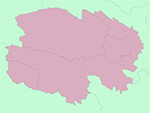
Index to Place Names in Qinghai: Study this list and plan your trip to Qinghai, the most exciting province for birding in China. We offer fascinating facts on famous places as well as sites little known, all with geographic coordinates. Read also our bibliography and use our index of eBird lists from the summer-long expedition.

Mammals and Birds of the Tibetan Plateau: Our team drove 3977 km (2,471 mi.) in 15 days, starting and ending in Golmud, Qinghai. In mountains as high as 5100 m (16,730 ft.), we found 98 species of bird. Mammals were the big stars. I watched a Tibetan Fox catch and devour a vole, we found 46 Tibetan Antelope and a Tibetan Wolf in Antelope Valley, and we saw dozens of Tibetan Wild Ass.
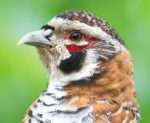
Tibetan Bunting Leads Parade of Tibetan Plateau Endemics in Qinghai: shanghaibirding.com founder Craig Brelsford led a three-person team on a 23-day trip to Qinghai. We covered most of the Tibetans (Tibetan Snowcock, Tibetan Partridge, Tibetan Babax, Tibetan Rosefinch, and Tibetan Bunting) and found Przevalski’s Finch near Qinghai Lake.
Qinghai in October: Jesper Hornskov and his team noted 178 species of bird in October, a time of year, Hornskov writes, “when few dedicated birdwatchers visit this unique land.”
Qinghai in the Age of Covid: Covid-19 complicated the trip, but watching Tibetan Wolf pups frolic made all the trouble worthwhile. We sampled a wide array of western China birds, among them Daurian Partridge, Pallas’s Sandgrouse, and White-winged Grosbeak.
In addition to coverage of Qinghai and our core area of Shanghai, shanghaibirding.com has extensive coverage of other areas of China, among them
Fujian
Northeast China
Sichuan
Xinjiang
Yunnan
Featured image: Tibetan Lynx, Kanda Mountains, Qinghai. (Craig Brelsford)

